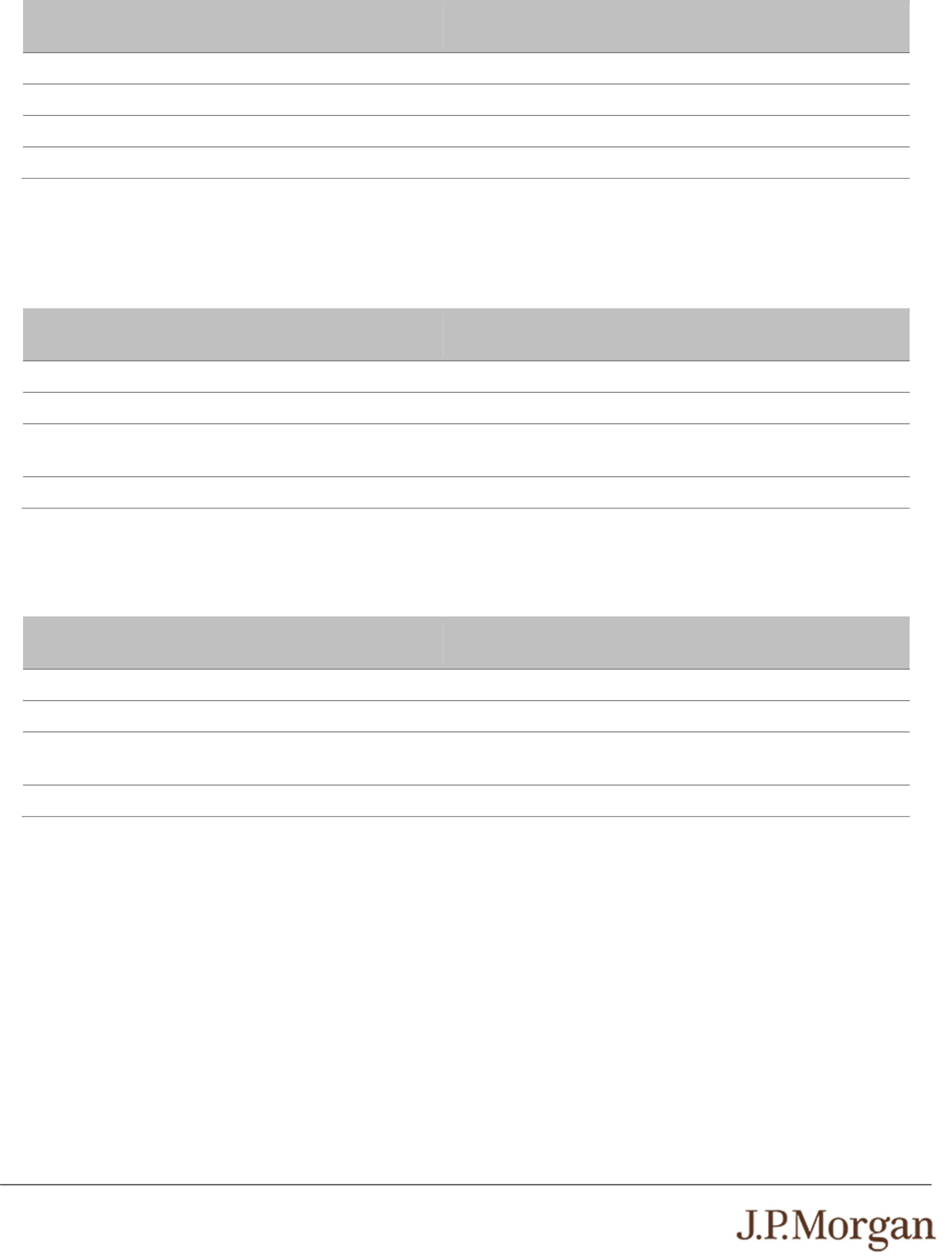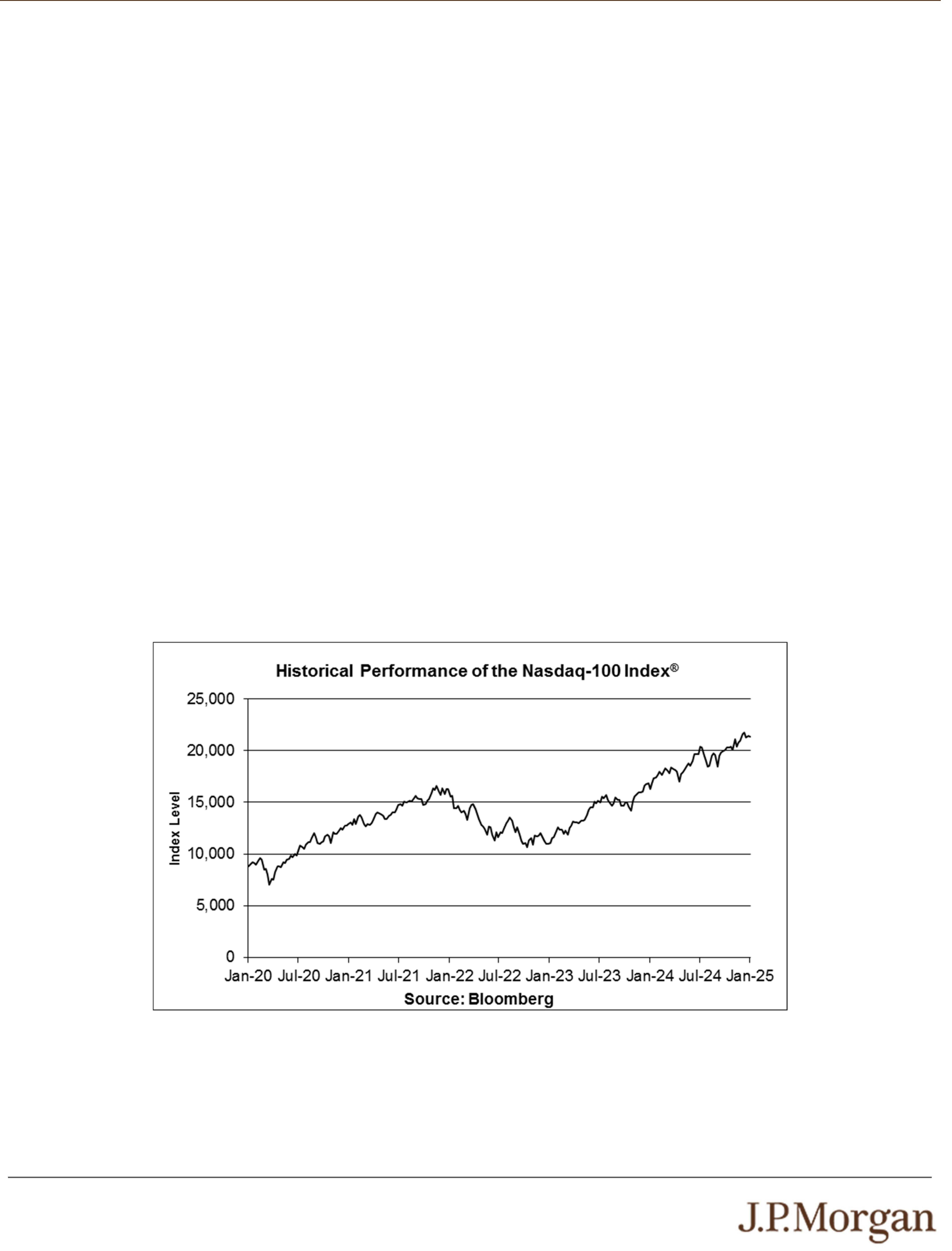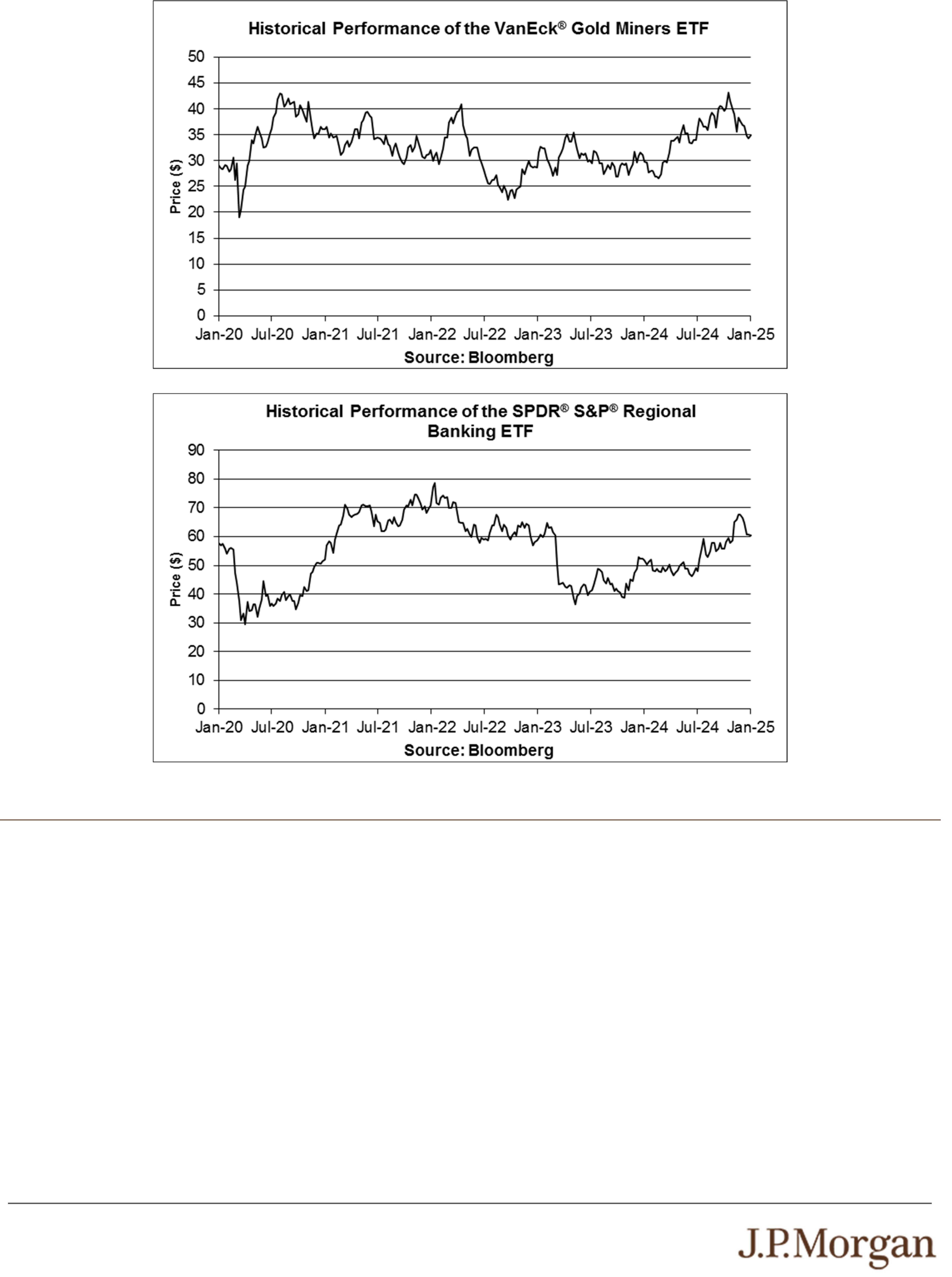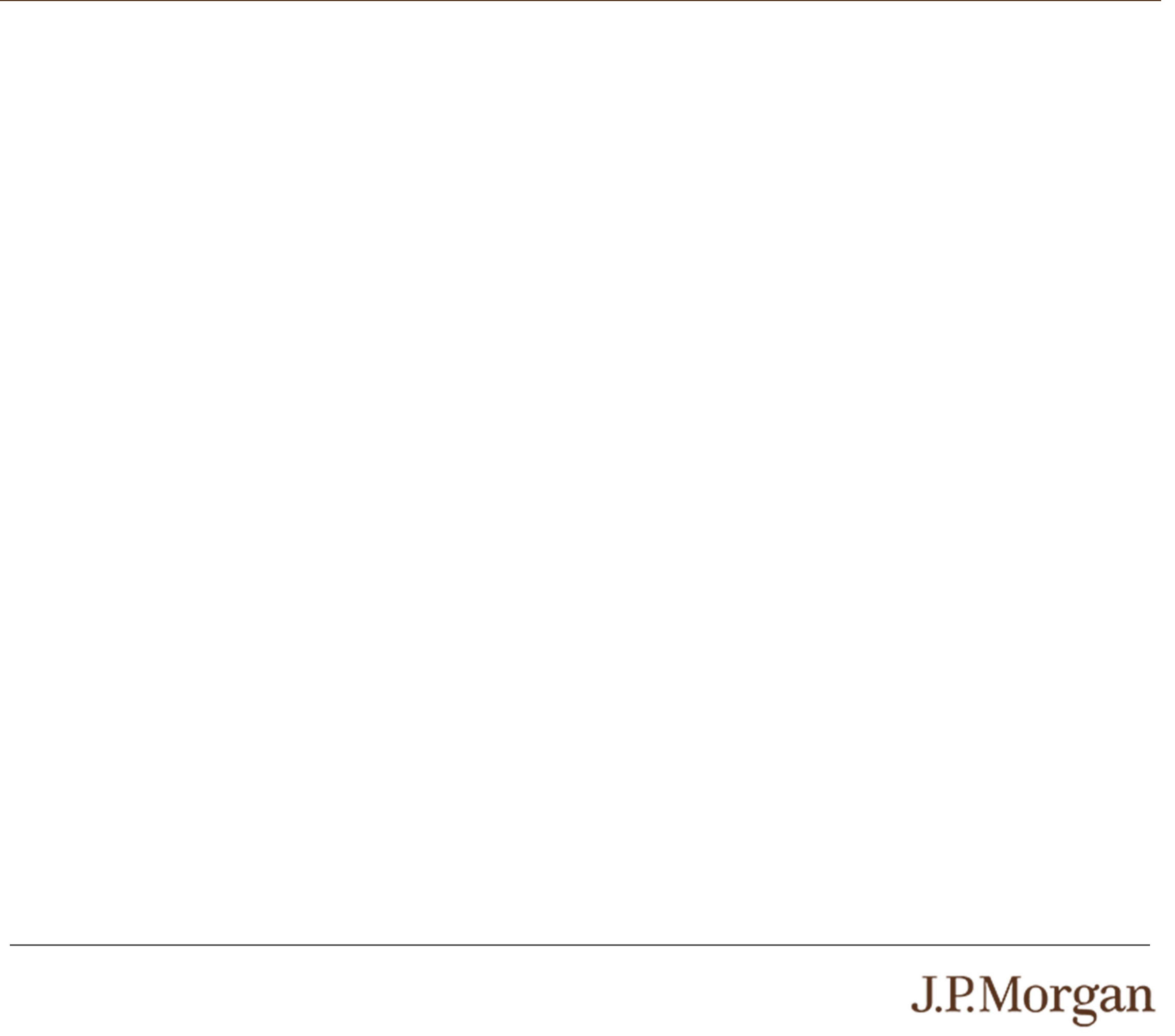
PS-7 | Structured Investments
Review Notes Linked to the Least Performing of the Nasdaq-100 Index
®
,
the VanEck
®
Gold Miners ETF and the SPDR
®
S&P
®
Regional Banking ETF
also, because secondary market prices may exclude selling commissions, projected hedging profits, if any, and estimated hedging
costs that are included in the original issue price of the notes. As a result, the price, if any, at which JPMS will be willing to buy the
notes from you in secondary market transactions, if at all, is likely to be lower than the original issue price. Any sale by you prior to
the Maturity Date could result in a substantial loss to you.
• SECONDARY MARKET PRICES OF THE NOTES WILL BE IMPACTED BY MANY ECONOMIC AND MARKET FACTORS —
The secondary market price of the notes during their term will be impacted by a number of economic and market factors, which
may either offset or magnify each other, aside from the selling commissions, projected hedging profits, if any, estimated hedging
costs and the values of the Underlyings. Additionally, independent pricing vendors and/or third party broker-dealers may publish a
price for the notes, which may also be reflected on customer account statements. This price may be different (higher or lower)
than the price of the notes, if any, at which JPMS may be willing to purchase your notes in the secondary market. See “Risk
Factors — Risks Relating to the Estimated Value and Secondary Market Prices of the Notes — Secondary market prices of the
notes will be impacted by many economic and market factors” in the accompanying product supplement.
Risks Relating to the Underlyings
• NON-U.S. SECURITIES RISK WITH RESPECT TO THE INDEX AND THE VANECK
®
GOLD MINERS ETF
Some of the equity securities included in the Index and held by the VanEck
®
Gold Miners ETF have been issued by non-U.S.
companies. Investments in securities linked to the value of such non-U.S. equity securities involve risks associated with the home
countries and/or the securities markets in the home countries of the issuers of those non-U.S. equity securities. Also, there is
generally less publicly available information about companies in some of these jurisdictions than there is about U.S. companies
that are subject to the reporting requirements of the SEC.
• THERE ARE RISKS ASSOCIATED WITH THE FUNDS —
The Funds are subject to management risk, which is the risk that the investment strategies of the applicable Fund’s investment
adviser, the implementation of which is subject to a number of constraints, may not produce the intended results. These
constraints could adversely affect the market prices of the shares of the Funds and, consequently, the value of the notes.
• THE PERFORMANCE AND MARKET VALUE OF EACH FUND, PARTICULARLY DURING PERIODS OF MARKET
VOLATILITY, MAY NOT CORRELATE WITH THE PERFORMANCE OF THAT FUND’S UNDERLYING INDEX AS WELL AS
THE NET ASSET VALUE PER SHARE —
Each Fund does not fully replicate its Underlying Index (as defined under “The Underlyings” below) and may hold securities
different from those included in its Underlying Index. In addition, the performance of each Fund will reflect additional transaction
costs and fees that are not included in the calculation of its Underlying Index. All of these factors may lead to a lack of correlation
between the performance of each Fund and its Underlying Index. In addition, corporate actions with respect to the equity securities
underlying a Fund (such as mergers and spin-offs) may impact the variance between the performances of that Fund and its
Underlying Index. Finally, because the shares of each Fund are traded on a securities exchange and are subject to market supply
and investor demand, the market value of one share of each Fund may differ from the net asset value per share of that Fund.
During periods of market volatility, securities underlying each Fund may be unavailable in the secondary market, market
participants may be unable to calculate accurately the net asset value per share of that Fund and the liquidity of that Fund may be
adversely affected. This kind of market volatility may also disrupt the ability of market participants to create and redeem shares of
a Fund. Further, market volatility may adversely affect, sometimes materially, the prices at which market participants are willing to
buy and sell shares of a Fund. As a result, under these circumstances, the market value of shares of a Fund may vary
substantially from the net asset value per share of that Fund. For all of the foregoing reasons, the performance of each Fund may
not correlate with the performance of its Underlying Index as well as the net asset value per share of that Fund, which could
materially and adversely affect the value of the notes in the secondary market and/or reduce any payment on the notes.
• RISKS ASSOCIATED WITH THE GOLD AND SILVER MINING INDUSTRIES WITH RESPECT TO THE VANECK
®
GOLD
MINERS ETF —
All or substantially all of the equity securities held by the VanEck
®
Gold Miners ETF are issued by companies whose primary line of
business is directly associated with the gold and/or silver mining industries. As a result, the value of the notes may be subject to
greater volatility and be more adversely affected by a single economic, political or regulatory occurrence affecting these industries
than a different investment linked to securities of a more broadly diversified group of issuers. Investments related to gold and silver
are considered speculative and are affected by a variety of factors. Competitive pressures may have a significant effect on the
financial condition of gold and silver mining companies. Also, gold and silver mining companies are highly dependent on the price
of gold and silver bullion, respectively, but may also be adversely affected by a variety of worldwide economic, financial and
political factors. The price of gold and silver may fluctuate substantially over short periods of time, so the VanEck
®
Gold Miners













